Happy Thanksgiving friends!!
I hope you are enjoying your day surrounded by friends and family, sharing some good food and drink along with lots of laughs. I hope too that you have much to be thankful for and that you will take time during the busy holiday season to appreciate the beauty of nature.
Thank YOU for reading and subscribing to my blog posts and giving me a reason to write. I am thankful for all of you and hope you will let me know if there is a subject I can cover for you in future posts.
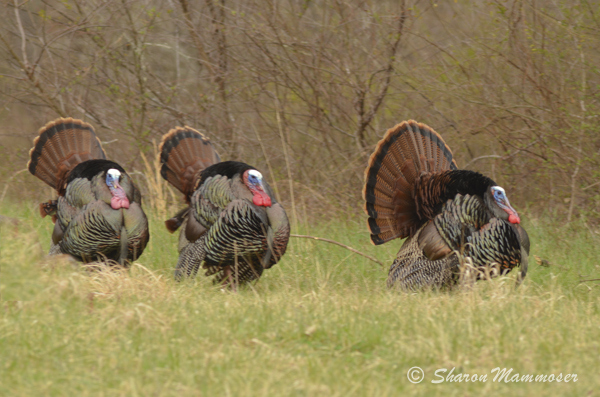
In honor of Thanksgiving, I thought I would revisit this post I published a while back about turkeys–only I have added a lot more pictures and information. What do you know about these big birds? For instance how can you tell a male from a female? What in the heck is a snood–and more importantly, does snood size matter? Can turkeys fly? What do they eat? What can you learn from the shape of their poop?
Here are 10 things you might not know about Wild Turkeys:
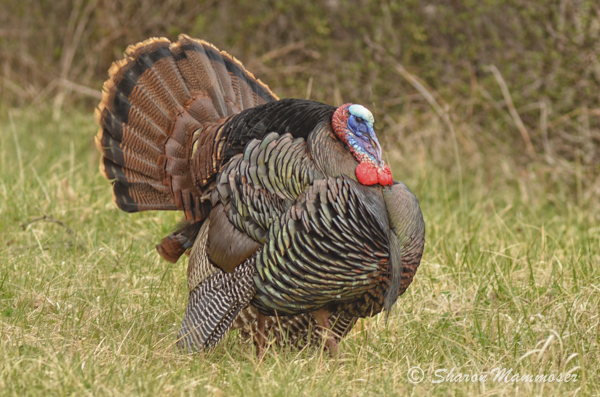
1. Despite a myth that says otherwise, wild turkeys CAN fly. Weighing from 5-20 pounds, they have been clocked for short bursts as fast as 55 mph. Also, they can glide without flapping their wings for almost a mile! Their domestic counterparts however cannot fly because they are so fat and heavy.
2. Turkeys can blush when they are frightened, ill or agitated and they have a lot cranial accessories. Their head and neck can turn red, white and blue. When it is mating season, male turkeys become more colorful. They have a flap of skin under their chin, called a wattle that turns bright red. They also have a flap of skin hanging over their beak, called a snood. This, along with their wattle becomes engorged and swollen when they are sexually excited. Both males and females have wattles and caruncles, but in the male, these are larger and more colorful.
Studies have shown that in turkeys, Size DOES matter–that is, females prefer males with longer and larger snoods. Also, males wih bigger snoods are actually healthier.
Here is a picture of a turkey, labeled: (Notice the difference in the snood size between this and the picture below.)
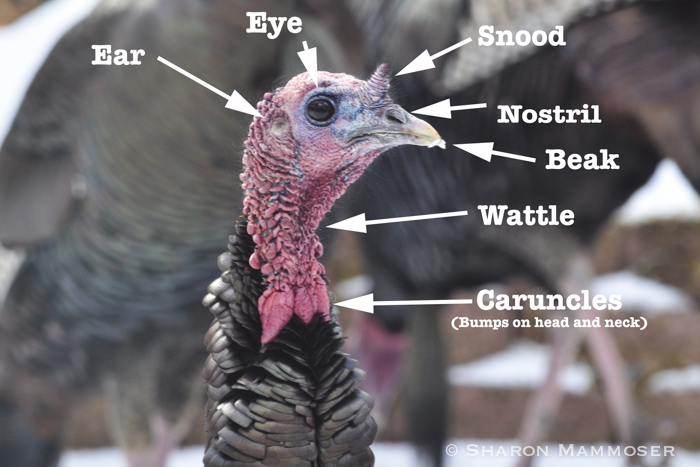
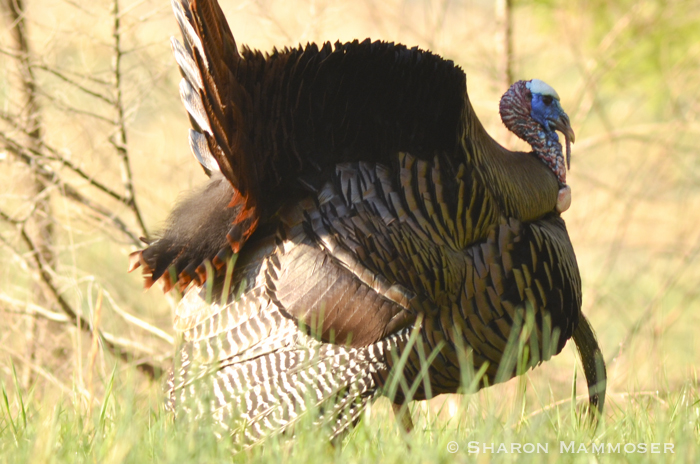
3. Turkeys spend the night roosting in trees. This keeps them safe from predators like coyotes, fox, and bobcats.
4. Wild turkeys have 5,000-6,000 feathers! Male turkeys have 18 tail feathers that make up their impressive fan, which they will open and spread out during mating season.If the feathers in the tail fan aren’t all the same length, you can tell this is an immature male.
5. Turkeys have fabulous vision and see in color. Their eyes are on the sides of their heads, giving them periscopic vision that is super useful in seeing predators. They are thought to see about 3 times better than humans. They can see an amazing 270 degree field of view.They do however, have poor night vision.
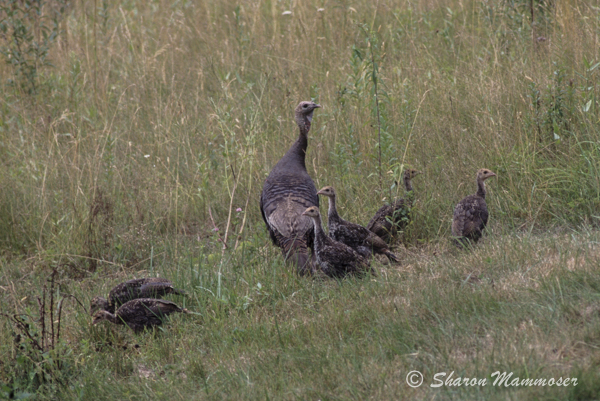 6. Male turkeys gobble to attract a mate and their gobbles can be heard up to a mile away. What’s amazing about this is that turkeys do not have external ears. Female turkeys do not usually gobble, but do make other sounds such as chucks and chirp-like noises.
6. Male turkeys gobble to attract a mate and their gobbles can be heard up to a mile away. What’s amazing about this is that turkeys do not have external ears. Female turkeys do not usually gobble, but do make other sounds such as chucks and chirp-like noises.
Check out this male turkey courting this female in Great Smoky Mountains National Park. She is not all that interested, but it doesn’t matter much to him–he keeps at it, puffing up his chest and trying to get her attention. Also, notice that she has a beard (WHAT! Did you say she has a beard? Yes!)…more about this later.
7. Female turkeys build their nests on the ground, covering their 12-18 spotted eggs with leaves when they are off in search of food. 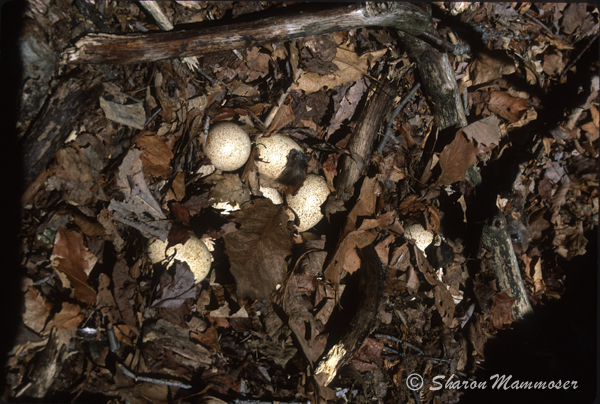 Females hide their nest locations from the males and do all of the work by themselves in raising the chicks. For the first two weeks, the chicks, or poults as they are called, cannot fly, so mom will roost on the ground with them during this time. The poults will stay with their mothers for a year. (In the photo with the trees there is a turkey nest at the base of the right-most tree)
Females hide their nest locations from the males and do all of the work by themselves in raising the chicks. For the first two weeks, the chicks, or poults as they are called, cannot fly, so mom will roost on the ground with them during this time. The poults will stay with their mothers for a year. (In the photo with the trees there is a turkey nest at the base of the right-most tree)
8. Male turkeys are called gobblers, or toms, while females are called hens. Adolescent males are called jakes and adolescent females are called jennies. Males have what’s called a “beard” which is a bunch of hair hanging from their chest. Interestingly, up to 20% of females also have a beard, so using this as the only way to tell the sexes apart is not reliable. (And females with beards or spurs CAN breed and lay eggs though myths are prevalent that suggest otherwise.) Beards of males get longer as the turkey gets older. At one year, the male’s beard is 3-5 inches, at 2 years it grows to 7-9 inches and then after 3 it can be longer than 9 inches, but it is often worn off because it drags on the ground when the males feed. Also, after 3 years, the beard becomes black tipped rather than amber tipped.
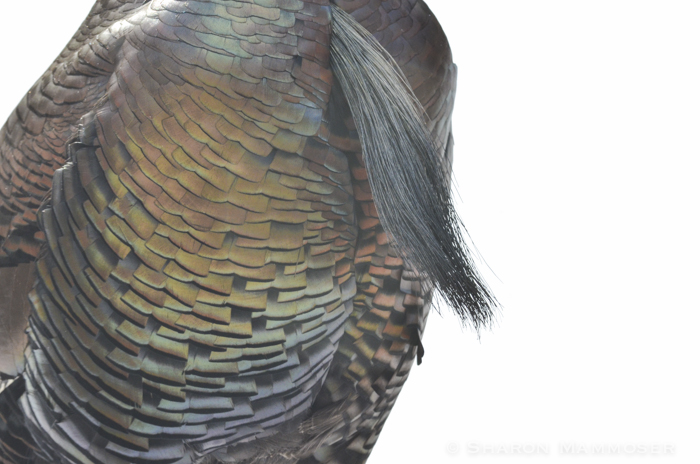
9. Turkeys spend most of their lives on the ground. They are omnivores, feeding on a variety of foods including seeds, acorns, berries, nuts and insects like crickets and grasshoppers. If you ever get a chance to watch a flock in a field, you can see them snagging insects in the grass as a child would grab at pieces of candy.
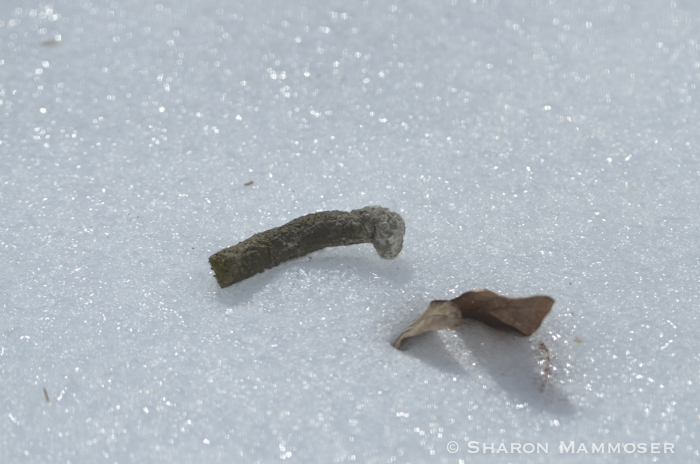
10. You can tell the sex of a turkey by the shape of its scat. (poop) Females produce spiral shaped poop while the shape of a male’s poop is the letter J. (Just imagine how useful this fact might be at some point in life…. Thanksgiving trivia anyone?….)
Here’s how to tell a male from a female turkey:
Males have:
- metallic looking feathers
- breast feathers that are black tipped
- a spur on each leg (spurs are used to spar with other males) As the turkey gets older, the spur gets larger. It is hard to see the spurs on juvenile males.
- more colorful heads, no feathers on their heads
- beards up to 12 inches long
- big feet–greater than 4.5 inches
- snoods and wattles that become engorged and swollen when they are sexually excited
Females:
- duller, light brown feathers
- breast feathers are buff tipped rather than black
- Spurs are not typical (once in a while a female can have spurs, but they are shorter than 1/2 inch)
- Light blue heads
- usually do not have a beard (some do, and if they do, the beards are sparse-looking and not very long)
- smaller foot–less than 4.5 inches
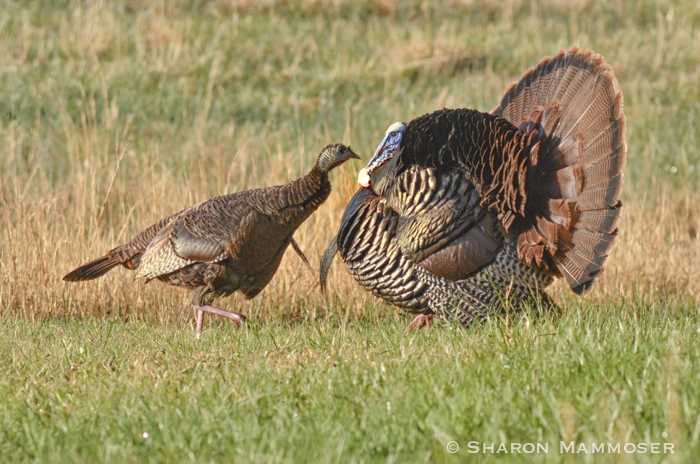
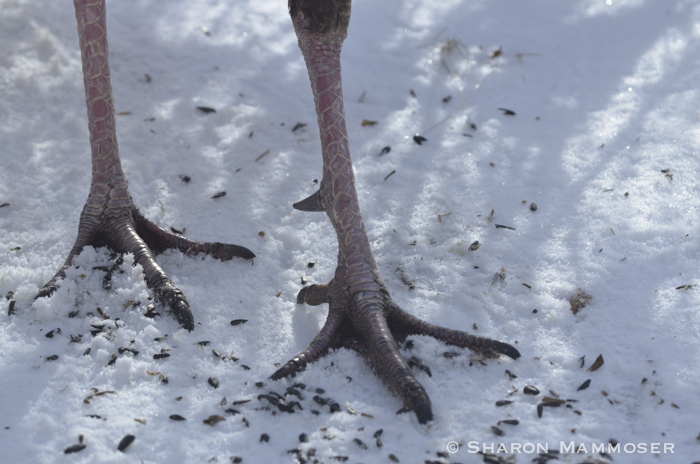
11.The average life span of a wild turkey is 3-5 years. Domestic turkeys in comparison live only a few months as these are raised to be fat and juicy–fed a protein-rich diet of corn and soybeans. And you know those few turkeys that the President of the Untied States issues a “pardon” to every year at this time? Well it’s not like they can be set free in the wild–they are way too fat and would not likely last a day. These pardoned turkeys are sent to Virginia where they live usually live a short time. The oldest wild turkey on record lived 13 years. Here’s an interesting article that goes more into depth about those Presidential pardons.
And just as a bonus since it is Thanksgiving, Americans consume about 46 million turkeys on this holiday, which is more than Easter and Christmas combined.
Are you among the 46 million who eat turkey on Thanksgiving?Have you seen turkeys in the wild? What is your favorite part about Thanksgiving?
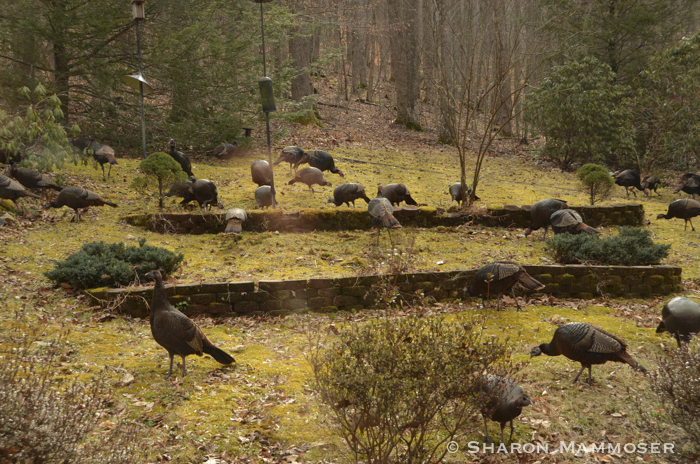
…As always, I would love to hear from you! Use the comment box below to drop me a note.


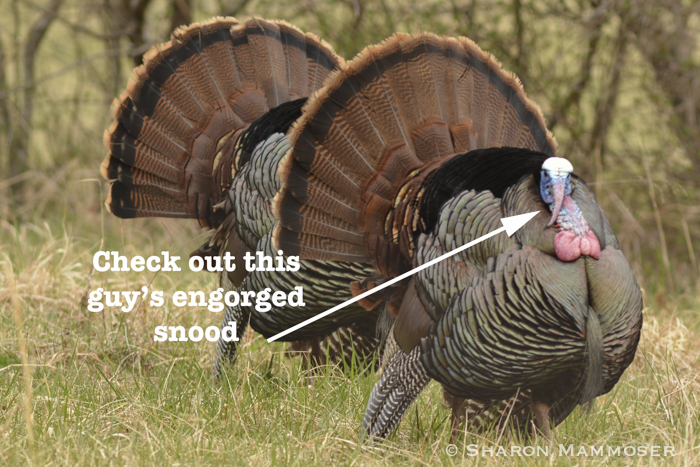
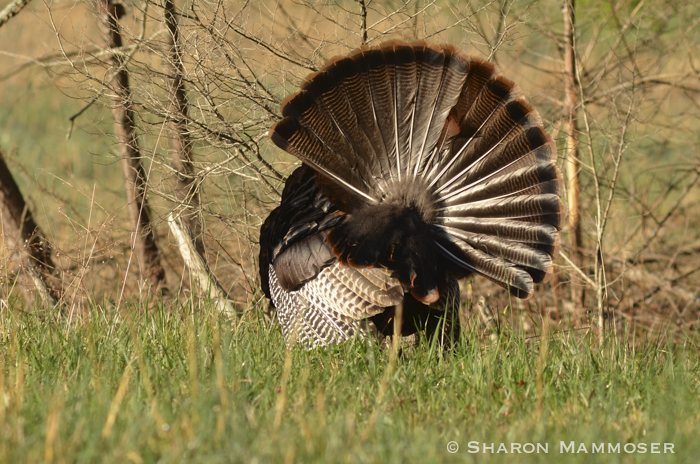
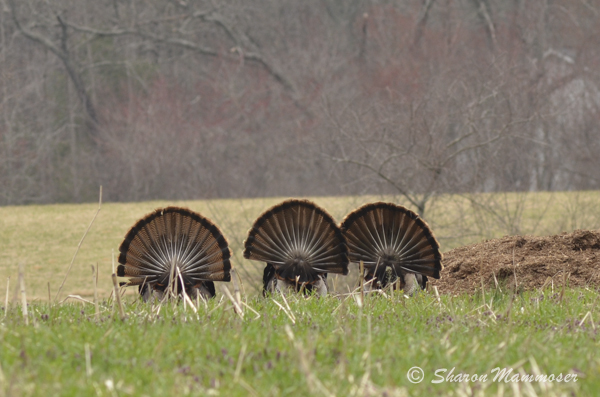
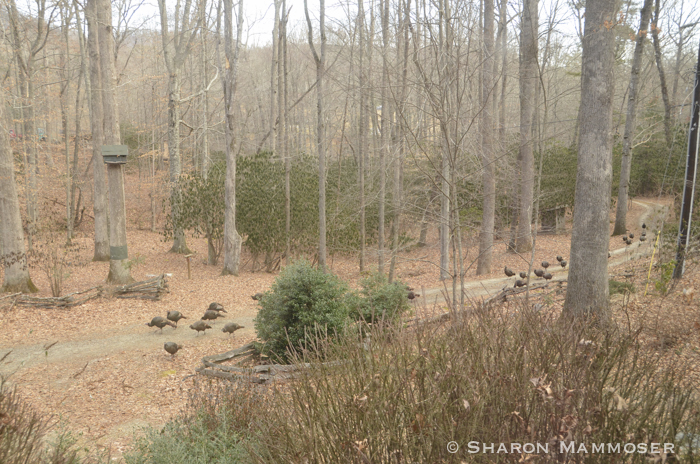
1 thought on “10 Things You Might Not Know about Wild Turkeys”
Comments are closed.